Getting your Trinity Audio player ready...
Humanity’s most precious resource is becoming scarce.
Due to climate change as well as growing populations and poor resource management, whole areas in the Middle East are transforming from once-fertile ground into barren wasteland.
Prof. Jay Famiglietti is executive director of the Global Institute for Water Security at the University of Saskatchewan in Saskatoon, Canada. A world-renowned hydrologist, he was previously senior water scientist at NASA’s Jet Propulsion Laboratory in Pasadena, California.
According to Famiglietti, the Middle East is one of the world’s top hotspots in terms of freshwater loss. He estimates that in recent years, parts of Turkey, Iraq, Syria and Iran have together lost nearly 300 million acre-feet of groundwater, equaling roughly two and a half times the volume of the Dead Sea, which is located between Jordan and Israel.
As for Jordan and Israel, as well as areas under Palestinian control, they are faring slightly better, but not by much.
“What’s happening globally is that the water from the dry areas is actually moving to the high latitudes,” Famiglietti says. “So the wet areas are getting wetter and the dry areas are getting drier.”
5 View gallery
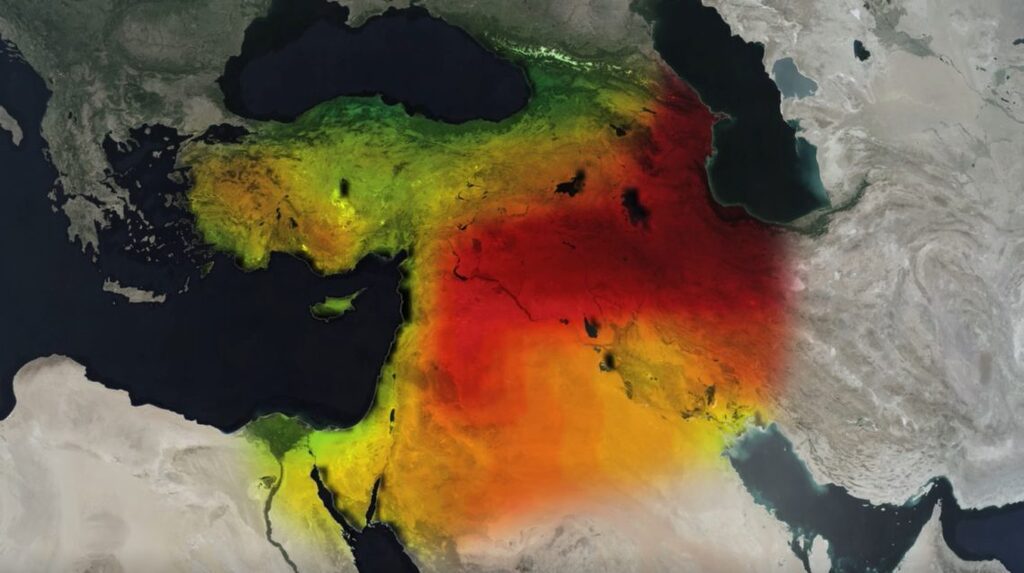

NASA satellite imagery shows how the Middle East has become a major hotspot for loss of groundwater in recent years
(Photo: Courtesy)
Using NASA satellite observations of Earth, Famiglietti in 2018 co-authored a pioneering study to determine shifts in freshwater around the world. He discovered that the planet’s arid areas were getting drier for a number of reasons, among them climate change and population growth.
“Those two things together drive an overreliance on groundwater because you’re in this dry part of the world where you need to use [it],” he says.
Famiglietti continues to monitor the data from NASA’s satellites and believes that, ultimately, agricultural technologies could significantly impact these negative trends, as desalination is not a workable solution for most landlocked countries.
“Let’s just say that people have to do something because if they don’t, they will run out of water,” he says.
“Business as usual is unsustainable,” he warns. “It’s lose-lose all around.”
Ancient techniques
In Israel, which long suffered from chronic water shortages before turning to desalination, scientists are racing to uncover other creative solutions.
In the Negev Desert, one scientist has found a low-cost, low-tech way to help populations in developing countries cope with water crises while simultaneously maintaining food security.
“This is an area where we’ve got an annual average rainfall of about 100 mm, or 4 inches a year, which is practically nothing,” says emeritus Prof. Pedro Berliner of the Blaustein Institutes for Desert Research at Ben-Gurion University of the Negev.
“But there is quite a lot of evidence that people lived here even 2,000 years ago,” he says, “and it was always a big question: How did they manage?”
5 View gallery
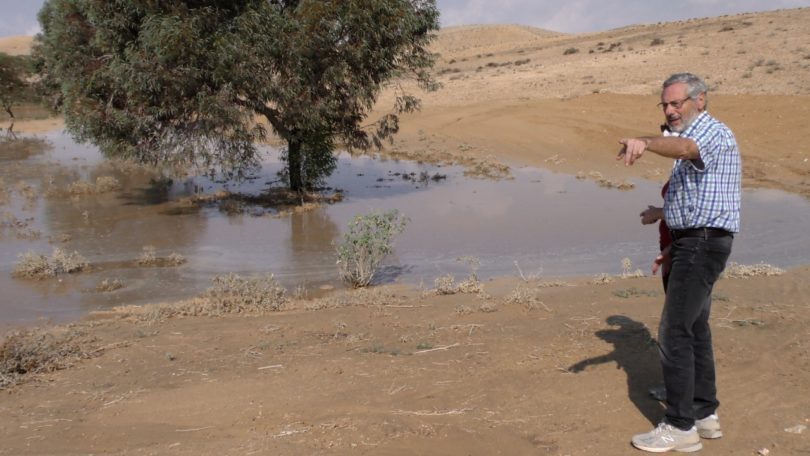

Emeritus Prof. Pedro Berliner of the Blaustein Institutes for Desert Research at Ben-Gurion University of the Negev
(Photo: Raymond Crystal/The Media Line)
Berliner is one of the world’s leading dryland agriculture experts and Israel’s representative to the United Nations Convention to Combat Desertification (UNCCD).
Desertification is a process whereby soil degrades from over-farming and groundwater depletion, rendering once fertile lands into arid areas. Climate change has also exacerbated the problem by lowering rainfall in places already prone to drought.
This is an area where we’ve got an annual average rainfall of about 100 mm, or 4 inches a year, which is practically nothing
“Over the last 40-50 years, large tracts of the Negev, our desert, have become agricultural land, which is probably the only place in the world where the desert shrinks, and not the other way around,” Berliner says.
Sometimes, though, modern problems require ancient solutions.
Berliner and his team of researchers have managed to revive farming methods used by the Nabateans to grow crops in the most inhospitable of environments. The Nabateans were an Arab people who lived in the Levant and Northern Arabia thousands of years ago.
Berliner and Gross both spoke to The Media Line on the sidelines of the world’s largest annual conference on desertification, led by BGU’s Blaustein Institutes.
Titled “Feeding the Drylands: Challenges in a Changing Environment,” the virtual event took place from November 16 to November 18 and featured presentations from more than 100 researchers, government officials and activists.
“The properties of this soil are such that they seal, and water is not absorbed,” Berliner says, pointing to a nearby depression. “It flows into the low-lying areas like the one behind me. This is what is basically called Nabatean techniques.”
5 View gallery
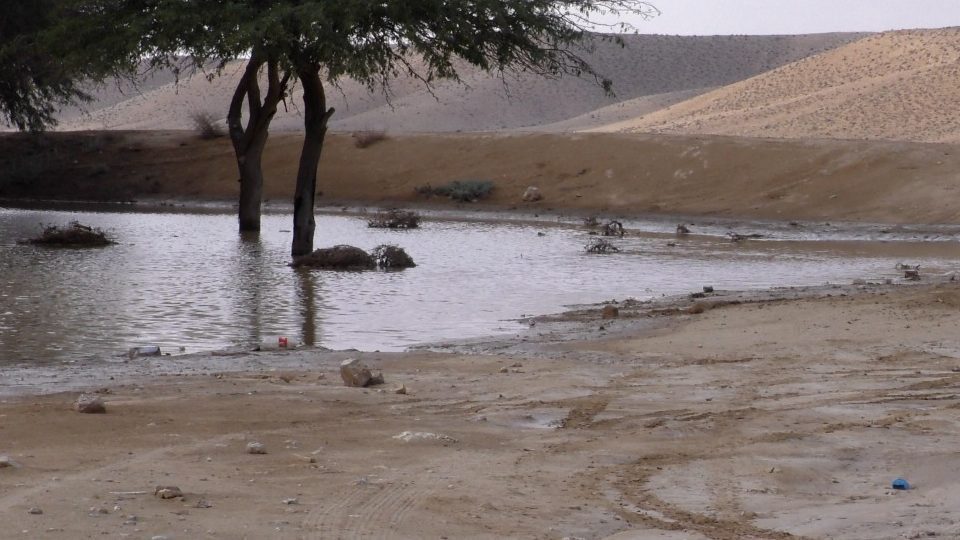

This pool of water formed in a depression in the Negev Desert following intense rainfall in November 2020
(Photo: Raymond Crystal/The Media Line)
According to Berliner, his research is intended to help countries that have few resources at their disposal and also less access to advanced irrigation technologies.
“What we’ve developed is a system in which, together with the trees, we also plant an intercrop,” he says. “This can be sorghum or wheat, and thereby provides food for people.”
So far, this low-tech technique has been very successful in Kenya’s Turkana desert, he says, noting that it can easily be implemented with very little machinery by relying on natural depressions in the ground.
Fish farming in the desert
Other researchers in the Negev region are also testing the waters for innovative ways to boost food security.
Prof. Amit Gross is the director of Ben-Gurion University’s Zuckerberg Institute for Water Research in the small southern town of Sde Boker.
He and a team of scientists have developed a unique aquaculture system to grow barramundi, tilapia, bass and a host of warm-water fish with nearly no need for water.
5 View gallery
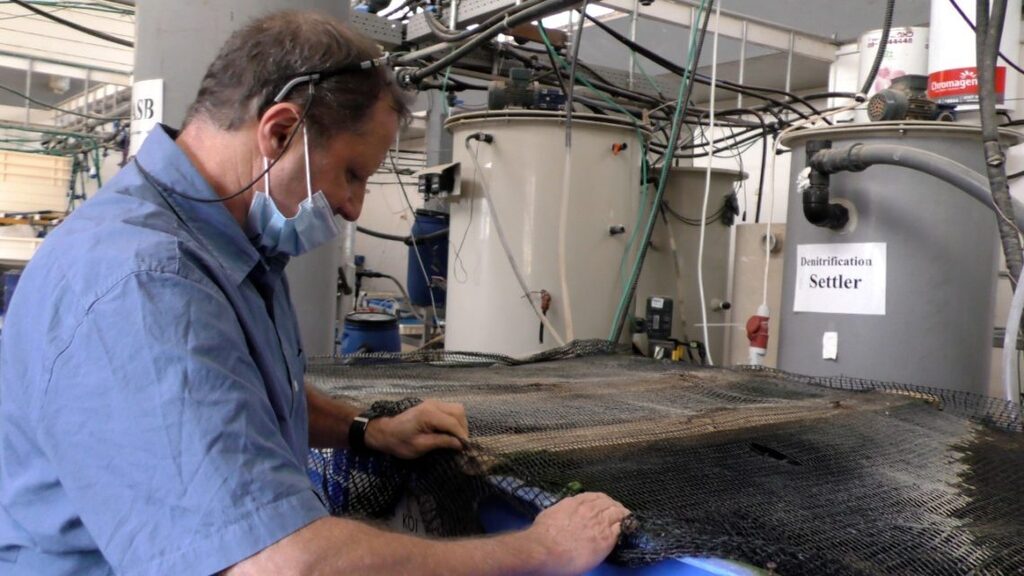

Prof. Amit Gross is the director of Ben-Gurion University’s Zuckerberg Institute for Water Research in the small southern Israeli town of Sde Boker
(Photo: Raymond Crystal/The Media Line)
“It’s quite strange to grow fish in the desert, where water is scarce, but what we’re trying to do here is to grow fish with very little water, [almost] the same amount of water that we [use] to grow tomatoes,” Gross says during a recent tour of the institute’s research facilities.
Among the advantages of farming fish in the desert, he says, are that the warm climate supports their growth year-round. Land and labor costs are also lower than in other parts of the country.
Gross’s system not only recirculates and treats the water inside the tanks, but also uses the fishes’ excretions to fertilize vegetables. The technology is so efficient that it allows for over 99.5% water reuse, unlike standard commercial systems that can waste up to 50% of their total water volume.
“In our most sophisticated system, we don’t use external energy at all, and just use the fish feed as the source for everything,” Gross says. “The energy to run the system is produced by the waste that the system produces.”
For now, the desert aquaculture project is in its pilot stage, and only students living near the institute have had the chance to taste the fish. Nevertheless, Gross hopes to see the technology go commercial in the near future.
“More than 50% of the fish supply is coming from aquaculture, whereas in the past, in the 1980s, it was maybe 5%,” Gross says. “It’s the fastest growing sector in agriculture.”
5 View gallery
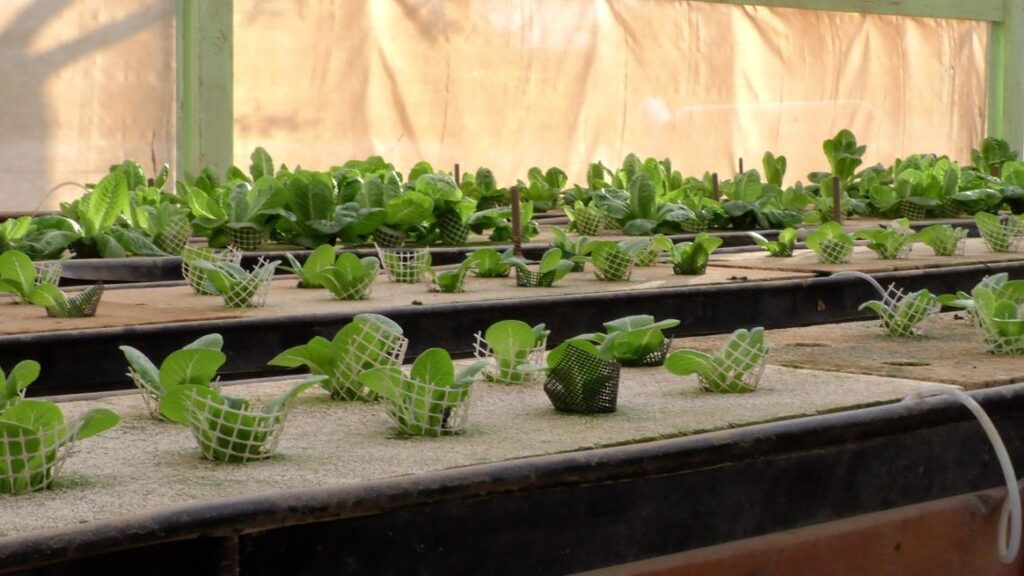

Aquaculture systems also help crops grow in desert climes
(Photo: Raymond Crystal/The Media Line)
Berliner and Gross were both speaking on the sidelines of the world’s largest annual conference on desertification, led by BGU’s Blaustein Institutes.
Titled “Feeding the Drylands: Challenges in a Changing Environment,” the virtual event took place from November 16 to November 18 and featured presentations from more than 100 researchers, government officials and activists.
At the moment, drylands cover over 40% of the world’s landmass, and this percentage is rising each year. While technological advances could help alleviate water scarcity issues for a time, the Global Institute for Water Security’s Famiglietti believes that ultimately, only regional cooperation and better governance will make a lasting difference.
“A lot of the problems that we see are regional. Those countries need to work together to develop regional water management plans,” Famiglietti says.
“We don’t really need to look for a miracle,” he says. “We need to use less water.”

